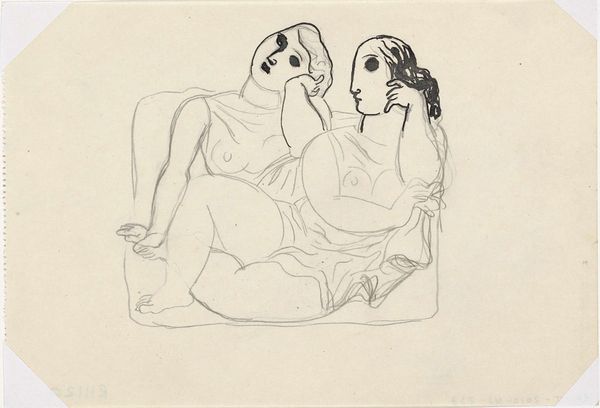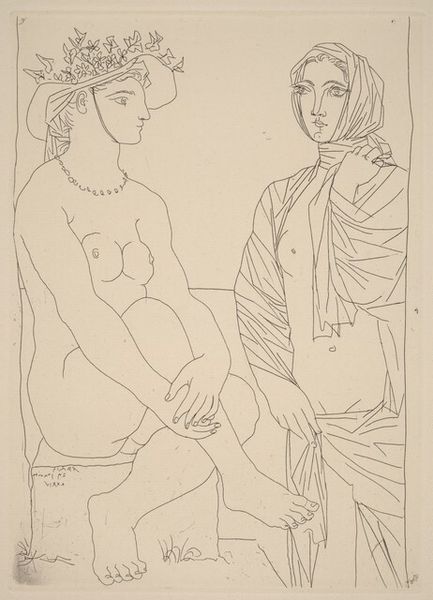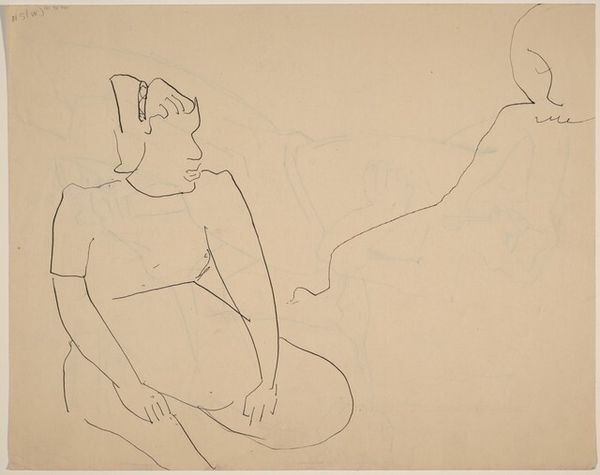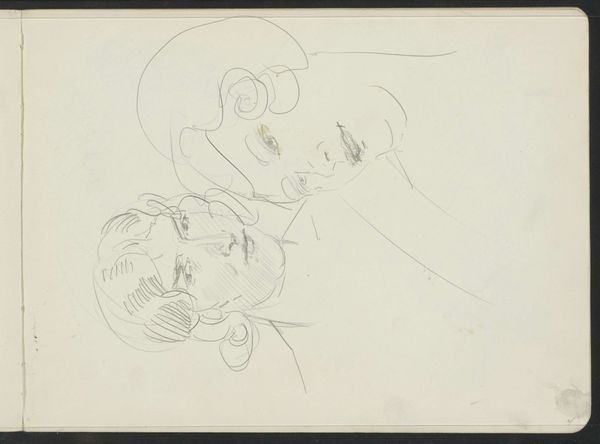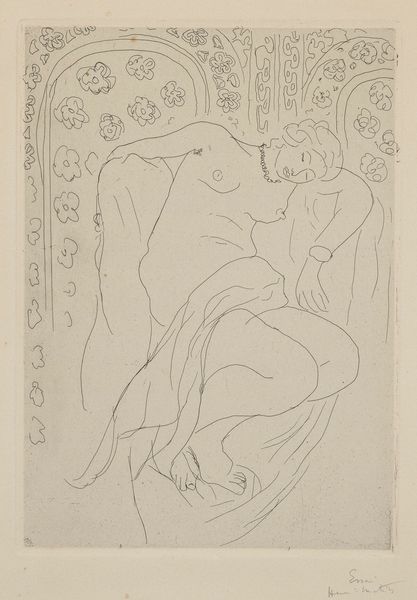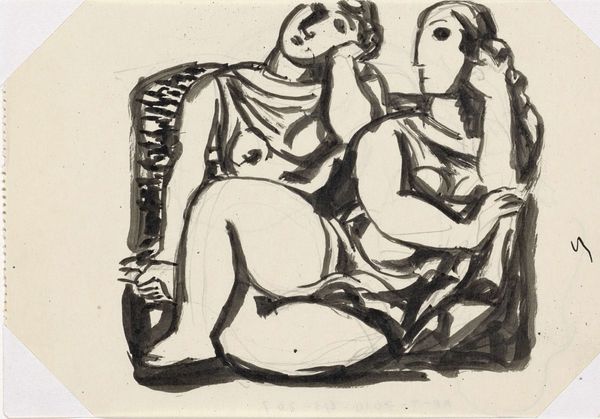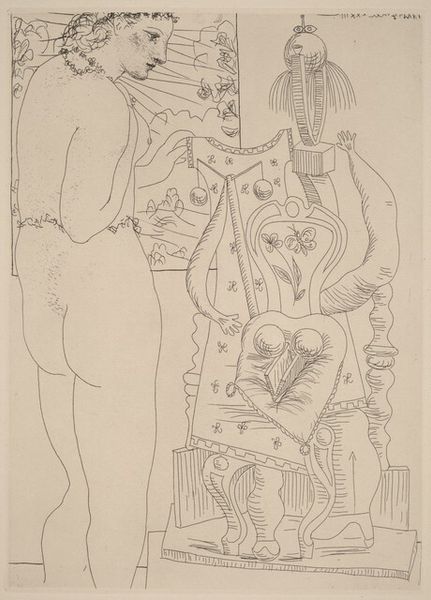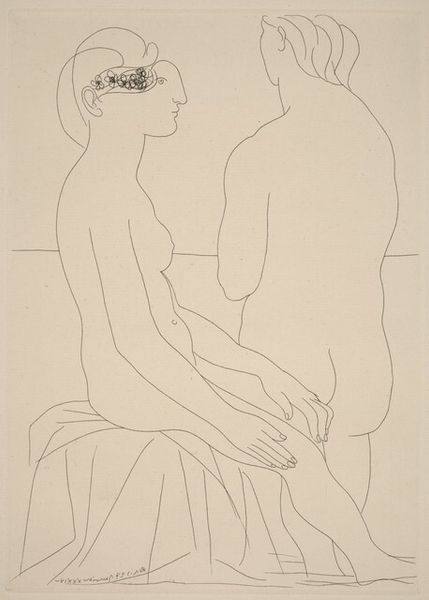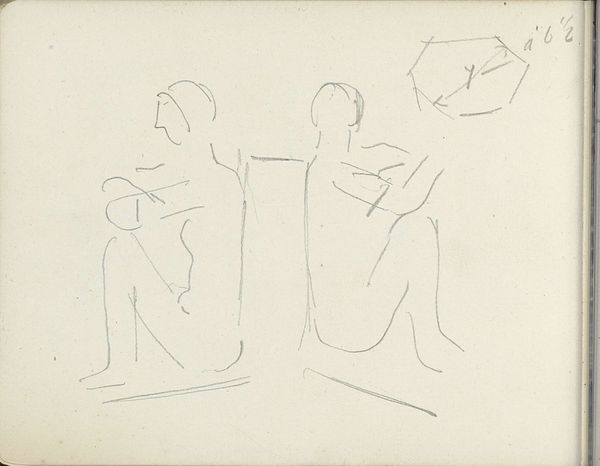
Schets voor 'L'art Hollandais contemporain' van Paul Fierens (baadsters) 1932 - 1933
0:00
0:00
drawing, paper, pencil
#
portrait
#
drawing
#
imaginative character sketch
#
light pencil work
#
pencil sketch
#
cartoon sketch
#
figuration
#
paper
#
personal sketchbook
#
idea generation sketch
#
ink drawing experimentation
#
pen-ink sketch
#
pencil
#
sketchbook drawing
#
modernism
#
initial sketch
Dimensions: height 133 mm, width 195 mm, height 100 mm, width 104 mm
Copyright: Rijks Museum: Open Domain
Curator: Here we have a preliminary drawing, made in pencil on paper by Leo Gestel around 1932-33. It's titled "Schets voor 'L'art Hollandais contemporain' van Paul Fierens (baadsters)," which translates to "Sketch for 'Contemporary Dutch Art' by Paul Fierens (Bathers)." Editor: The first thing that strikes me is the stark simplicity. The sketch, featuring two reclining figures, seems so vulnerable in its unadorned state, offering just enough detail to ignite our imagination. There's an intimacy here, almost as if we’ve stumbled upon a private moment between the artist and his idea. Curator: It's interesting that you say that, because the "bathers" theme has deep roots in art history, often symbolizing leisure, sensuality, and a return to nature. It is clear Gestel is evoking classical iconography of reclining women. We also know he associated with Paul Fierens, so the artwork should probably be put into dialogue with what he expected from him. Editor: Exactly, the association with "Contemporary Dutch Art" is crucial here. This isn’t just about escaping to nature; it's about how Dutch identity is negotiated and visualized in a rapidly changing world. This scene, though seemingly timeless, engages with debates on modern identity, representations of women, and evolving societal values. Curator: Indeed, and these women…there is a kind of melancholy resignation present in them. The heavy-lidded eyes, the slumped posture – it carries an emotional weight. This melancholic posture aligns well with ancient tropes, suggesting women and reflection. Perhaps Gestel sees the same relationship, women associated to being in touch with oneself through emotional labor? Editor: I appreciate your take. It pushes me to consider the political dimensions too. The 1930s were a time of global upheaval, witnessing growing authoritarianism. Could this melancholic posture reflect a broader sense of anxiety or perhaps disillusionment? A resistance to the prevailing socio-political forces of that time. It's important not to strip away the artist from this historical setting. Curator: That's insightful! Looking at the composition, the drawing provides no easy answers and evokes complexity in its subject. The medium is a clear departure from the classical tradition the poses attempt to echo. Editor: I'm left pondering the silent dialogues in this piece. What are these women thinking? What were the political hopes that Gestel was envisioning for this piece? It reminds me how art invites us into conversations with the past and also pushes us to ask difficult questions of the present. Curator: For me, this brief encounter with Gestel’s work highlights the power of symbols across centuries, all coalescing here, today.
Comments
No comments
Be the first to comment and join the conversation on the ultimate creative platform.
